With UConn leaving the AAC, college football’s roster of independents grew to seven for the 2020 season. The Huskies are dealing with some pretty serious, long-term, existential questions at the moment, which is honestly something you could say about every team on this list, from a listless UMass to a Notre Dame program trying to figure out how to join college football’s ruling class.
Jump to: UMass | New Mexico State | UConn
Liberty | Army| BYU| Notre Dame
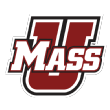 Head coach: Walt Bell (1-11, second year)
Head coach: Walt Bell (1-11, second year)
2019: 1-11 (130th in SP+)
2020 projection: 2-10 (129th)
Five best returning players: DE Chinedu Ogbonna, WR Zak Simon, LB Cole McCubrey, WR Samuel Emilus, LG Helber Fagundes
Walt Bell always seems to project confidence. If he can still do that now, you know it’s genuine.
Bell was confident enough to take on one of the hardest jobs in FBS last year. He had already dealt with challenges. He was Maryland’s offensive coordinator in 2016-17, when he had to make do with a steady stream of quarterback injuries, and he was Florida State’s OC in 2018, when he was tasked with moving the ball despite maybe the worst offensive line in school history.
Last season brought something altogether different, however. In his first year in the northeast, he cycled through three quarterbacks throwing to mostly freshman and sophomore receivers. The offensive line was young and banged up, and defensive coordinator Aazaar Abdul-Rahim struggled to figure out what to do with the defensive pieces predecessor Mark Whipple left him.
You could call 2019 a year of planting, then. Bell and his staff planted seeds and gave lots of young guys playing time in the hope that it might bear a nice crop in future years. Also, the Minutemen got planted on their backsides a lot. Despite taking on what SP+ judged to be the second-easiest schedule in FBS, they were outscored by an average of 53-20. They lost to Southern Illinois, a midtier Missouri Valley team, by 25 points. They were saved from an 0-12 campaign only by a home toss-up win over 0-12 Akron.
It was bad. And Bell probably knew it would be.
There likely wasn’t as much year-to-year continuity as he hoped. Abdul-Rahim took a job at Boston College, running back Bilal Ally — easily the most dangerous offensive player on the roster — entered the transfer portal, and starting nose tackle Dennis Osagiede and safety Joseph Norwood both left for FCS.
Bell signed a solid class, considering what he had to sell, and he attempted to plump up the depth chart with JUCOs including quarterback Kyle Lindquist and running back Ellis Merriweather. Plus, Notre Dame cornerback transfer Noah Boykin is eligible now. The raw talent level will be a little higher this year, but the proven pieces are almost nonexistent.
“Leading” passer Andrew Brito returns, but after he averaged 3.8 yards per attempt including sacks, it’s safe to say that his grip on the job isn’t great. Receivers Jermaine Johnson Jr., Samuel Emilus and Zak Simon were all pretty efficient, all things considered, and the offensive line returns seven guys with starting experience. On defense, 18 front-seven players got at least 100 snaps, and 12 return, including a solid edge rusher in Chinedu Ogbonna. But the secondary loses four of its top six, so there will be pressure on Boykin and sophomores Josh Wallace and Elijah Johnson to produce.
The schedule gets a bit harder, but there are still win opportunities for the Minutemen. Bottom line: If Bell manages to win in Amherst, it’s going to take a while, and it’s probably not going to be in 2020.
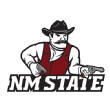
Head coach: Doug Martin (22-63, eighth year)
2019: 2-10 (123rd in SP+)
2020 projection: 4-8 (128th)
Five best returning players: LT Sage Doxtater, DT Roy Lopez, LB Rashie Hodge Jr., LB Devin Richardson, C Max Wilhite
It’s always difficult to pick a school other than NMSU to top the “hardest jobs” list. The Aggies have all the geographic isolation of UTEP and none of the conference ties. They lost their Sun Belt membership a couple of years ago but have soldiered on at the FBS level, seemingly for no reason beyond “We really like playing FBS football.”
How hard is this job? Doug Martin has a 0.259 win percentage in seven years in Las Cruces, and he has been the most successful coach there in ages. Granted, that’s mainly because of NSMU’s 2017 bowl run — the Aggies beat Utah State in the Arizona Bowl, their first bowl in 57 years. Martin has won only five games in two years since then, but he, too, soldiers on. This was a tough offseason for him — and not only for coronavirus-pandemic-related reasons. Martin dealt with allegations of racial bias and pressuring players to return from injury. The state’s attorney general, however, cleared him of any wrongdoing.
The 2020 season offers a particularly navigable slate for NMSU, as five opponents are projected 122nd or worse in SP+. That means that despite a No. 128 projection, the Aggies have an outside shot of reaching bowl eligibility. They also welcome plenty of interesting new faces; former Michigan running back O’Maury Samuels, UCF tight end Anthony Roberson, Georgia receiver Joshua Moran and Missouri offensive lineman Darvis Holmes could all enter the depth chart, and Martin signed an absurd number of junior college transfers (14, by my count), too.
Bringing in this many transfers can wreck your class balance — once you go strongly down the juco road, you can’t ever stop — but there’s one positive thing about the Aggies this year: They’ll look the part. The offensive line boasts six guys listed 6-foot-6 or taller and six at 310 pounds or heavier. That includes 6foot-7, 327-pound Sage Doxtater, who missed most of 2019 because of injury and is probably the best player on the roster. Meanwhile, defensive tackle Roy Lopez is 6-foot-2, 310 pounds. He is probably the best defensive player, and he also missed most of 2019. The linebackers are almost all more than 230 pounds, and every defensive back is 6-foot or taller.
Obviously, size means nothing without skill and speed, but it’s a start.
Martin has particularly large holes to fill at quarterback, where starter Josh Adkins transferred to UTSA, and in the secondary, where seven of last season’s top nine are gone. Martin brought in juco Jonah Johnson to help with the former and five more jucos to help with the latter. Redshirt freshman Brandon Shivers, one of Martin’s most high-profile signees, could be ready to step in at cornerback, too. Lopez and a decent linebacking corps should give defensive coordinator Frank Spaziani more options up front.
NMSU has a pretty low bar to clear when it comes to “improvement,” and I’m guessing that with good size and their best players back in the trenches, they’ll clear it. Still, the ceiling’s awfully low.

Head coach: Randy Edsall (80-100, 16th total year)
2019: 2-10 (126th in SP+)
2020 projection: 3-9 (126th)
Five best returning players: DT Travis Jones, WR Cameron Ross, RB Kevin Mensah, CB Keyshawn Paul, DE Kevon Jones
Program-building progress in college football doesn’t tend to happen in linear fashion. Things don’t usually just get better one year, then a little better the next and so on. Progress is more of the “four steps forward, three steps back” variety.
Sometimes it’s four steps forward, four steps back.
Randy Edsall has struggled mightily to build any sustainable progress in his second go-around at UConn. He brought about some improvement with offensive coordinator Rhett Lashlee in 2017-18, but Lashlee left for SMU, and the Huskies fell to 125th in offensive SP+ last fall. On defense, a bad situation turned into Armageddon when the biggest youth movement you’ll ever see produced the worst defense you’ll ever see in 2018. The Huskies allowed a frankly awe-inspiring 50.4 points per game. It was so bad that they improved by 10 points per game in 2019 but still ranked 125th.
Three years in, there has been no definable progress. Now there’s no conference affiliation, either. UConn left the AAC, and though basketball and the other programs are joining the Big East, the football team has gone indie.
Coordinator Lou Spanos’ defense offers more continuity than it has in quite a while. Granted, maybe the team’s best player, defensive back Tyler Coyle, transferred to Purdue, but the Huskies return virtually every lineman, three of their top four linebackers and four of their top five DBs. Players such as cornerback Keyshawn Paul and gargantuan tackle Travis Jones are legitimately decent, and the experience level continues to rise.
Offensively, the best players are mostly sophomores. That’s probably a sign that any major improvement is at least one more year away. Jack Zergiotis took the majority of snaps at quarterback but averaged just 4.8 adjusted net yards per attempt (take the yards-per-attempt average, include sacks, add 20 yards for every touchdown and subtract 45 for every INT). He will continue to field a challenge from fellow sophomore Steven Krajewski (who looked pretty good against UCF), NC State transfer Micah Leon and perhaps incoming freshman Jonathan Senecal.
Sophomore receiver Cameron Ross showed efficiency potential while taking on opposing No. 1 corners last season, and junior Cameron Hairston, sophomore Matt Drayton and Elijah Jeffreys flashed at least a little pop. There’s reason for pitch-and-catch encouragement, but coordinator Frank Giufre’s line is going to be problematic. Only two starters and one senior return, and the two-deep will be loaded with freshmen and sophomores. Thousand-yard rusher Kevin Mensah is back, but his open-space opportunities could be sparse.
I said above that NMSU’s biggest reason for playing FBS football despite minimal goals or progress seems to be that it likes playing FBS football. It appears that UConn is in a similar situation. The Huskies haven’t provided hope for a while now, and without the AAC, there’s no particularly logical FBS home for their program. But as long as they continue playing, Edsall will get more chances to create some magic. (If it were likely to happen, it wouldn’t be magic.)
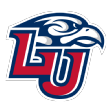 Head coach: Hugh Freeze (8-5, second year)
Head coach: Hugh Freeze (8-5, second year)
2019: 8-5 (75th in SP+)
2020 projection: 7-5 (109th)
Five best returning players: WR DJ Stubbs, C Thomas Sargeant, FS Javon Scruggs, RB Joshua Mack, DE Tre’Shaun Clark
Both Hugh Freeze and Liberty University make it hard to strip away context and focus on football results. At Ole Miss, Freeze challenged Twitter users to email the school’s compliance department about violations he apparently was committing, then resigned in 2017 for what we’ll call personal dalliances. His current employer just lost two players (corner Kei’Trel Clark and safety Tayvion Land), plus a key women’s basketball player, because of “racial insensitivities” among the school’s leadership.
Hearing either the school’s or the coach’s name fills your head with back story and context, but this is a football preview, and for all intents and purposes, the football is looking good. For starters, that’s because the school has invested in its facilities. The aforementioned context has made it difficult for LU to garner a conference invitation at the FBS level, but it’s has a heckuva infrastructure.
Also, Freeze is a heckuva (context-free) football coach. He won big at Lambuth University. He won 10 games in his only season at Arkansas State. He beat Alabama twice at Ole Miss and, in 2015, engineered the school’s first top-10 finish in 46 years. (That team was third in SP+.)
Freeze inherited some talented pieces from predecessor Turner Gill — quarterback Stephen Calvert and receiver Antonio Gandy-Golden, to name two — and knew what to do with them. Despite dealing with some significant back issues and a staph infection early in the season, Freeze engineered significant improvement in his debut. The Flames improved from 121st to 75th in SP+, not only earning their first bowl bid but also winning the game. Both the up-tempo, pass-happy offense and the attacking 4-2-5 defense that he deployed at Ole Miss took hold nicely right out of the gates.
Calvert and Gandy-Golden are gone, but most of LU’s other stars return. If Freeze can find his QB among a pool of youngsters (redshirt freshman Johnathan Bennett) and transfers (Auburn’s Malik Willis, Maine’s Chris Ferguson), he’ll have everything he needs for another solid season. Running back Joshua Mack and receivers DJ Stubbs and Kevin Shaa, all seniors, are super efficient, and sophomore Noah Frith produced explosive numbers as Gandy-Golden’s backup.
The defense loses two safeties in addition to Clark and Land, but NC State transfer Tim Kidd-Glass and senior Benjamin Alexander might be active enough to make up the difference. The departure of Jessie Lemonier (10.5 sacks, 20 run stuffs) hurts, but the trio of Tre’Shaun Clark, Austin Lewis and Jayod Sanders has plenty of potential. Freeze has ramped up recruiting, but depth could always be an issue in moving from an FCS-level 63 scholarships to FBS’ 85. A run of injuries could be costly, but that’s the case for most schools.
The schedule features both plenty of win opportunities — five games against teams projected 110th or worse in SP+, plus two FCS opponents — and marquee upset chances in the form of road games at Virginia Tech, Syracuse and NC State. It would be a surprise if the Flames don’t have another awfully good season.
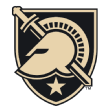
Head coach: Jeff Monken (40-36, seventh year)
2019: 5-8 (72nd in SP+)
2020 projection: 6-6 (104th)
Five best returning players: FB Sandon McCoy, TB Artice Hobbs IV, NT Kwabena Bonsu, CB Javhari Bourdeau, insert starting QB here: either Christian Anderson or Jabari Laws
The margins are small in college football, especially for a service academy. It’s almost impossible to always end up on the right side of them.
In 2018, Army attempted 36 fourth-down conversions and succeeded on 31 of them (86%). Against teams with winning records, the Knights were 18-for-20 (90%). It probably isn’t a coincidence that they were also 4-1 in one-score finishes. Combined with a particularly easy schedule — 10 of their 13 opponents ranked worse than 80th in SP+, and they went 10-0 in these games (with three one-score wins) — Army won 11 games for the first time and finished in the AP top 20 for the first time in 60 years.
In 2019, the schedule got a little harder: Only seven games were against teams worse than 80th, and four were against teams ranked 41st or better. The Knights were actually more efficient offensively (46% success rate in 2018, 47% in 2019), but they went a far more mortal 26-for-39 on fourth downs (67%). They were still at 88% in wins, but they were at 61% in losses.
This time, they went 1-4 in one-score games — again, probably not a coincidence. Despite the fact that their raw numbers were about the same and they improved in SP+ (thanks primarily to a much better special-teams unit), they collapsed to 5-8.
Just as Army probably wasn’t as good as its record in 2018, it wasn’t as bad last season. You could use that as cause for optimism if you’re so inclined. But the cadets’ poor SP+ projection is a reminder of two things:
1. Quarterback Kelvin Hopkins Jr. is gone after two incredible years as a starter, and though returning backups Christian Anderson and Jabari Laws both have experience — Anderson as a wonderfully efficient runner, Laws as an intriguing passer and solid runner — there’s an opportunity for a drop-off there.
2. Once again, the margins are really small for the academies. You can achieve pretty high heights, but the proverbial boulder can roll pretty far back down the proverbial hill at any moment.
I’m more optimistic than SP+ both because we’ve seen quite a bit out of Anderson and Laws already and because there are quite a few intriguing junior and senior playmakers on defense, from tackle Kwabena Bonsu to linebacker Arik Smith to corner Javhari Bourdeau. Depth will forever be an issue for a school with such restrictive entrance requirements, but the starting 11 on defense should be solid.
Even with a low projection, though, the opportunity for bounce-back is clear. Army plays seven teams projected 98th or lower in SP+ and only one higher than 55th. There are more likely wins than losses, and if Hopkins’ successor turns out to be the real deal, there’s a solid chance for at least eight or nine wins. But as we’ve seen the past couple of years, a few more breaks and a few more fourth-down conversions will go a long way.
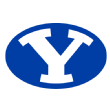
Head coach: Kalani Sitake (27-25, fifth year)
2019: 7-6 (60th in SP+)
2020 projection: 6-6 (53rd)
Five best returning players: QB Zach Wilson, LT Brady Christensen, TE Matt Bushman, OLB Isaiah Kaufusi, NT Khyiris Tonga
It seems that Kalani Sitake’s entire four-year tenure as BYU head coach has been clouded by the word “however.”
Early on, the Cougar’ defense performed about as well as it had when Sitake was Bronco Mendenhall’s defensive coordinator. However …
An unsuccessful offensive coordinator hire — legendary BYU quarterback Ty Detmer was unable to pull the right strings after jumping from the high school coaching level — meant a second-year program collapse. The Cougars were 4-9 and 97th in SP+ in 2017, their worst season since probably the late 1960s. However …
Replacement coordinator Jeff Grimes brought a stronger identity to the table starting in 2018, and the Cougars ignited late in the season, when freshman quarterback Zach Wilson found his footing. They averaged 39 points per game in their last four contests, and Wilson was a perfect 18-for-18 for 317 yards and four touchdowns in a bowl win over WMU. It looked like the program was ready to take a sustained step forward in 2019. However …
Wilson missed four games because of injury last fall. South Carolina running back transfer Ty’Son Williams looked great early, then missed the last nine games. Both lines were constantly in shuffle mode, and only one of the top nine DBs managed to play in all 13 games. An offense that was supposed to improve instead stayed at the same level on average, and thanks primarily to glitches against the pass, the defense fell from 33rd to 57th in defensive SP+, its worst ranking since 2008. Four one-score wins kept the Cougars at 7-6, but three one-score losses showed how things could have gone had the roster stayed healthier.
What happens now? Your guess is as good as mine, but theoretically, there’s a lot to like. Wilson is back, as are sophomores Baylor Romney and Jaren Hall, the two backups who filled in pretty well in his absence. The top three wideouts are gone, but juniors Gunner Romney, Neil Pau’u and Dax Milne all have solid experience, and tight end Matt Bushman is excellent. Last year’s seven primary offensive linemen are all back, as are six of the top seven defensive linemen and the top eight linebackers (plus 2018 starter Zayne Anderson). The secondary gets hit pretty hard by attrition, but three veterans who missed most or all of last season — corners Chris Wilcox and Keenan Ellis, safety Troy Warner — are back. There is an encouraging amount of depth of experience and proven quality.
The schedule is a challenge. The Cougars face road trips to Utah, Arizona State, Minnesota, Boise State and Stanford and welcome Michigan State, Missouri, SDSU and Houston to Provo. Only four opponents are projected worse than 63rd in SP+, so BYU would be well-served to overachieve its No. 53 projection a bit. There is opportunity here — there always is with the way BYU’s indie schedules are drawn up — but Sitake’s tenure has been defined by the other shoe dropping. We’ll see if his team can put all the pieces together this time.
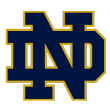
Head coach: Brian Kelly (92-37, 11th year)
2019: 11-2 (19th in SP+)
2020 projection: 9-3 (12th)
Five best returning players: LB Jeremiah Owusu-Koramoah, QB Ian Book, LT Liam Eichenberg, DE Adetokunbo Ogundeji, RT Robert Hainsey
In the 13 seasons between when Lou Holtz left Notre Dame and when Brian Kelly took over, the Fighting Irish averaged seven wins per season, with an average ranking of 37th. There were brief peaks, but success began to appear unsustainable.
In 11 seasons under Kelly, the Irish’s average SP+ ranking has risen to 18.8, with four top-15 rankings and five AP finishes of 12th or higher. After winning double-digit games just three times between 1994 and 2014, the Irish have done so in four of the past five years.
Credit to Kelly, however, for not appearing satisfied. Despite a No. 20 ranking in offensive SP+, he dismissed coordinator Chip Long, hoping that quarterbacks coach and up-and-comer Tom Rees could take the team a bit further up the charts. Before last year’s Camping World Bowl blowout win over Iowa State, Kelly told media that he was making a concerted effort to improve recruiting. “We want to break out of the 15th-ranked or the 10-ranked. We want to get into that next echelon,” he said.
Saying it and doing it are two different things, but a few extra recruiting wins per year against the nation’s heavyweights would go a long way. While we wait to see if he can upgrade the talent, he should have an awfully fun squad on his hands this season.
It starts with Ian Book. The senior quarterback finished 19th in Total QBR last season, throwing for 3,034 yards with a 34-to-6 TD-to-INT ratio. He’s a decent runner as well, and he’ll have one of the nation’s best tackle duos (Liam Eichenberg and Robert Hainsey) protecting him. They’re two of six returning linemen who have combined for 115 career starts.
That’s a pretty strong starting point, but Book will need some help from some youngsters and newcomers in the skill corps, namely Northwestern grad transfer receiver Bennett Skowronek and blue-chip freshmen such as running back Chris Tyree, receiver Jordan Johnson and tight end Michael Mayer. If sophomore receiver Braden Lenzy can turn small-sample explosiveness (11 catches, 254 yards, two TDs) into large-sample production, that’s all the better.
On defense, last season’s strengths and weaknesses could flip. Notre Dame ranked 49th in rushing success rate allowed but returns every defensive tackle, a strong end in Adetokunbo Ogundeji and run-stuffing linebackers Jeremiah Owusu-Koramoah and Drew White. Meanwhile, the secondary was dynamite, and though Ogudneji, Owusu-Koramoah and rush end Daelin Hayes (injured in 2019) should provide a strong pass rush, both starting safeties and corner Troy Pride Jr. are gone. Sophomore safety Kyle Hamilton could be unbelievable soon, and corners TaRiq Bracy and Shaun Crawford are solid, but strong depth will require contributions from freshmen and Ohio State transfer Isaiah Pryor.
The schedule presents an opportunity: The Irish face just three projected top-40 opponents, and SP+ projects them as double-digit favorites in each of the other nine games. Going 12-0 would require beating Clemson, but a top-10 finish could absolutely be in the cards with a couple of close wins.
